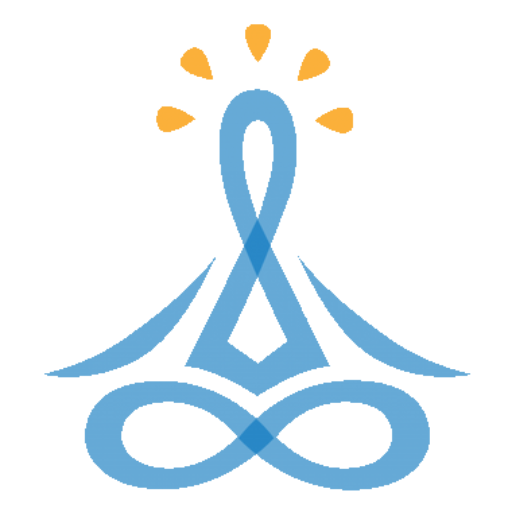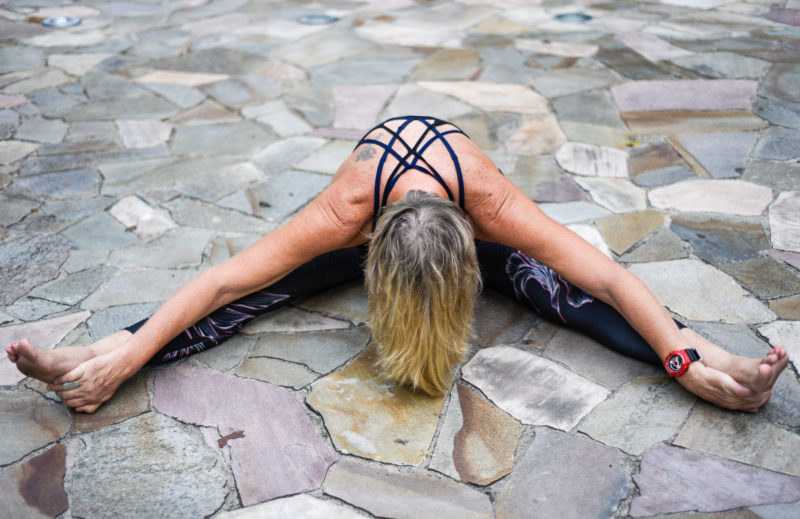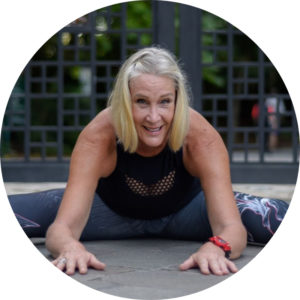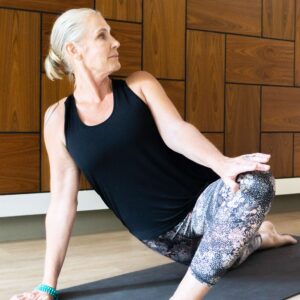I am sitting on my floor on a red wool rug bought in Agra India, feeling it beneath my butt, in dragonfly pose as I write this essay. A bolster is at my back, my coffee table is my desk.
I was asked to write an essay as part of my initial training in yin with Sarah Powers. This blog is a slightly larger version of that initial assessment.
Simple but not simplistic, Yin yoga’s benefits are in its stillness.
I was reflecting on this statement having just finished guiding an on line live yin practice. That practice was a stark contrast to one of my earliest ‘yin’ yoga sessions at a yoga studio renowned in Singapore for being THE place to go for yoga. In 2015. The place where yoga teachers go for their own personal practice. I was in King Pigeon pose. I had a strap attached to my ankle, and was asked to pull my leg closer to my head and arch my head backwards. You’ve come to the right place if you want to stretch and restore, says the teacher (who has been known to do headstands spontaneously in the reception area). It did not feel any of those things.
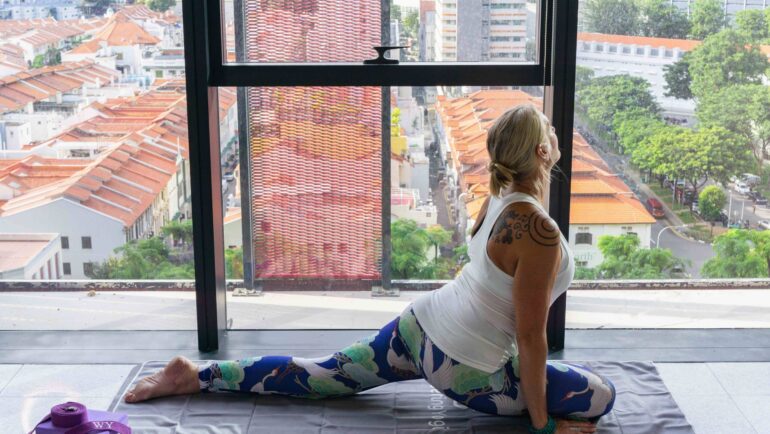
Same, same but different
All yoga brands have the same goals and objectives, help us to enlightenment, combine strength and flexibility, keep us sane, really. Some yoga is more physical. Like Ashtanga (I am so envious of those who can go from a handstand back down to chataranga in one fluid movement). Others are slightly more static – alignment is the key in Hatha or Bikram, for example. Others are more contemplative, asking us to explore our quieter less physical side (like Yin or restorative). Some yogas look very similar to each other (like restorative and Yin).
The elements of Yin
Yin is a large space inside the massive tent that is yoga. So what makes something yin or not yin?
There are two elements to Yin that make it special. They are: the way this yoga engages and enlivens our chi (energy), and the way this yoga is mindfulness training. Think slow it down, think working from the inside out. Most other yoga will work the other way around. As a teacher, the way you set up practice for you and others is with this intention towards inward attention.
The chi big picture
Our body, the whole universe, is an ebb and flow of energy forces. Some of that energy moves a little slower, has stronger patterns than others (for example creating our body form). Other energy shifts a lot faster, are hard to physically touch (like wind) or feel (like light). This is known as light energy by scientists.
Asthanga and Bikram, ‘yang’ yoga practices, for example will shift, change and recharge our light energy mainly through the use of muscles, bones and joints. Muscles are stressed (or activated) to build strength. So stretching in King Pigeon pose with a strap is a yang practice even if you are holding it for a couple of minutes – particularly if you are in the pose for a couple of minutes.
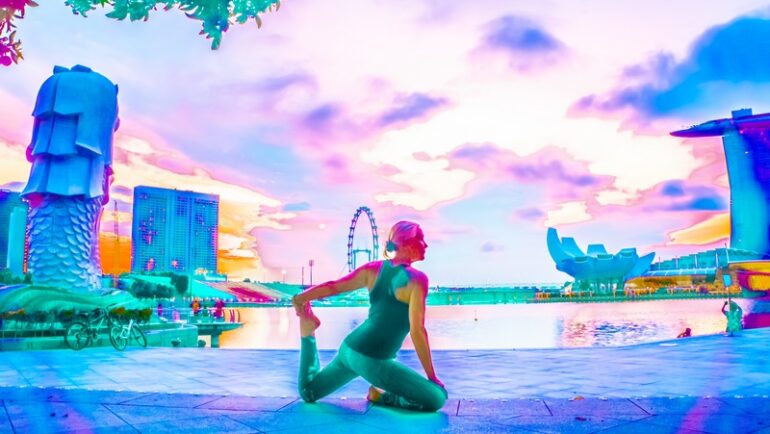
Yin yoga asks us to consider that spread across our body and in our energy ‘core’ lies a reservoir of ‘liquid gold’ energy – our chi force.
In Taoism, this is described as our chi, the universal life energy, circulating throughout our body. This QI (or chi) is the energy and blood rivers, streams and tributaries throughout our body. They are linked to our major organs, the heart, lungs, kidney, liver, lungs, gall bladder, small and large intestine. (there are also two other meridians called the Governor and Triple Concept meridians, yin yoga does not really tend to these). This chi is a vital energy source for us, and when it is blocked, stagnating or weak, it affects our vital organs and our moods. The condition of our organs and our moods also affect our chi. The relationship is reciprocal.
To tend to this chi, we need a yoga that works those parts of our body and energy that are not in plain sight. Like our connective tissue, joints, ligaments, fascias, and indirectly our organs. We need a yoga which makes us stop and mindfully attend to the unspoken hidden messages our body sends us via our chi.
Which means NOT like that ‘yin’ class I experienced at that yoga studio in Singapore.
Moving our attention inwards
Tendons, ligaments and our fascia are tough and stubborn. Their job is to connect our bones and joints with our muscles. The muscles’ job is to be strong and flexible to support (but not connect) our bones and joints.
Muscles are about 80% water, and tendons, ligaments are around 12% – 20% water adding a whole new meaning to the word ‘tough’.
Because of this natural toughness, the benefit to inside ourselves can only happen, if we stay in yoga poses for 3 – 4 times longer than in our yang practice.
The moment our muscles engage in a pose, we are asking these deeper tissues to ‘man’ up, to do their job of being tough and hold it all together.
Because we are not asking our muscles to be the heroes in Yin Yoga, the poses are less about correct alignment, and more about finding a natural pose within your ‘normal’ range of movement – a pose that is a little uncomfortable but does not use loads of muscle energy. Using a strap or block is meant to assist the natural form, not extend it.
Yin yoga works mainly from the navel to the knees, although I explore specific shoulder & neck poses when I teach. Regardless, there are standard sets of poses, with variation, because what is natural and normal for you, may not be for another. It has no active arm poses (such as vasisthana, chaturanga, or similar). It doesn’t have King Pigeon with a strap in it, either.
Teaching our muscles to step down and relax is no mean feat. We must be still to help them do that.
The Golden Rules of Yin
There aren’t many, and they are firm boundaries. All yin, from restorative to chi generating, has them as their guide.
1. Keep still – inside and out
Meaning, not fidget, rearrange our mat, block or bolster, or re-invent the conversation you wished you had not experienced with your recalcitrant teenage daughter that morning. Probably the last time you were that still, was just before you went to sleep. Still in body, so you can focus on what is happening inside you as you ‘marinate’ in the pose.
Learning to access breath as way to create stillness in the mind, knowing that emotions are powerful winds that blow through you in yin yoga. Some Yin does not teach breath, however, it is such a fundamental part of all yoga, that learning to ‘undo’ breathwork, and then ‘redo’ it the yin way is nothing short of life-changing.
2. In the pose forever
It seems like that, but as I’ve already pointed out, you cannot stretch and tone tough internal tissue with a bouncy 3 – 5 breath pose. Anywhere up to 5 minutes. To hold a pose for up to 5 minutes, in that stillness, is where Yin Yoga has a unique comparative advantage to other yoga. It allows you to practice the techniques of mindfulness – which is a huge step in the direction of personal happiness and contentment.
Unlike muscle, which doesn’t take much to gain shape, to allow tendons and ligaments to reshape (however tiny that may be by science standards), you must continue to apply a gentle steady loading on them.
3. Have the feelings, don’t let the feelings have you
Maintaining a pose for any length of time will stimulate a response in those energy rivers and streams (the chi) where our feelings flow. Perhaps feelings that have been stagnating for a while. Or feelings we may be ‘over experiencing’.
This notion of emotions manifesting in our body (not on the internet or in our mind) is now acknowledged, and many Western psychotherapists use some sort of mindful techniques to help people access and clear the emotional memories stored in their bodies.
I have cried, been angry, felt overwhelming joy in yin poses. As have others. You will, too.
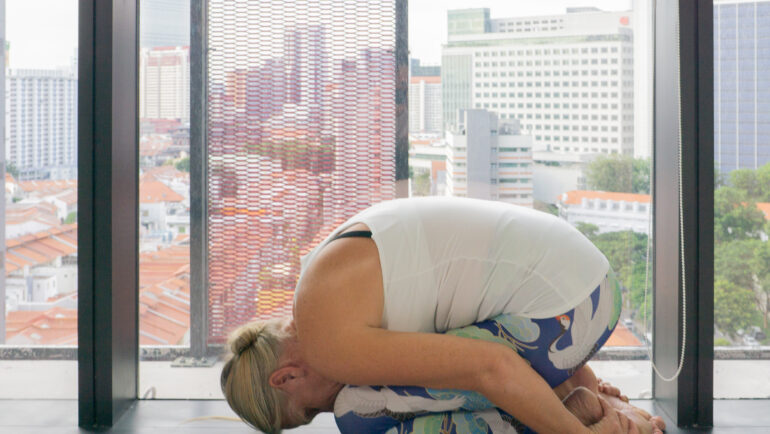
In yin, we recognize all our emotions, gather, flow or pass through our body. A regular practice of Yin will enable you to choose which option you would prefer for a particular emotion – gather, flow or allow to pass. WYOGILEE

